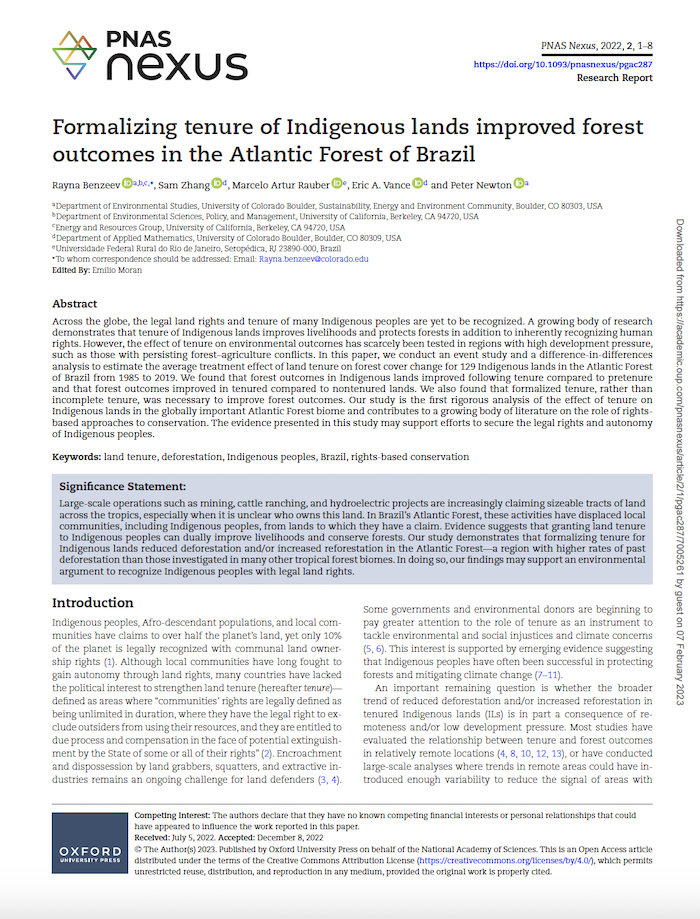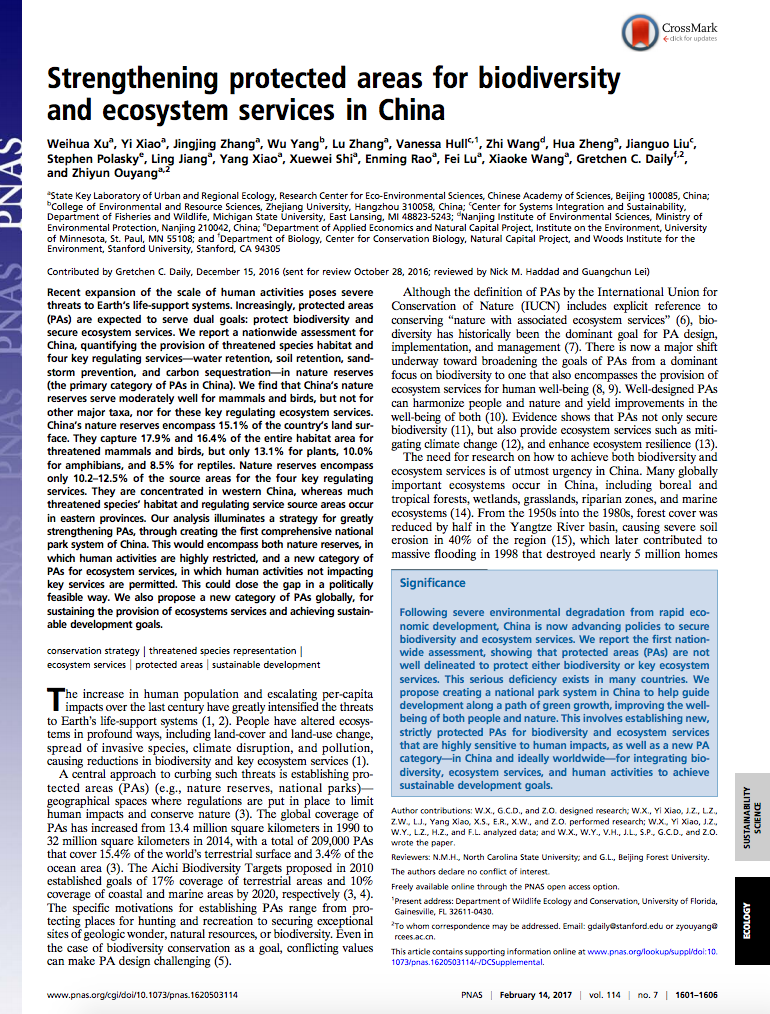PNAS is one of the world's most-cited and comprehensive multidisciplinary scientific journals, publishing more than 3,800 research papers annually. Established in 1914, PNAS publishes cutting-edge research, science news, Commentaries, Reviews, Perspectives, Colloquium Papers, and actions of the National Academy of Sciences.
The journal's content spans the biological, physical, and social sciences and is global in scope. Nearly half of all accepted papers come from authors outside the United States.
PNAS publishes only the highest quality scientific research. Every published paper is peer reviewed and has been approved for publication by an NAS member. Submissions are accepted from all researchers; authors do not need to have a connection to an NAS member to publish in PNAS.
Members:
Resources
Displaying 1 - 5 of 9Formalizing tenure of Indigenous lands improved forest outcomes in the Atlantic Forest of Brazil
Across the globe, the legal land rights and tenure of many Indigenous peoples are yet to be recognized. A growing body of research demonstrates that tenure of Indigenous lands improves livelihoods and protects forests in addition to inherently recognizing human rights. However, the effect of tenure on environmental outcomes has scarcely been tested in regions with high development pressure, such as those with persisting forest–agriculture conflicts.
Strengthening protected areas for biodiversity and ecosystem services in China
Recent expansion of the scale of human activities poses severe threats to Earth’s life-support systems. Increasingly, protected areas (PAs) are expected to serve dual goals: protect biodiversity and secure ecosystem services. We report a nationwide assessment for China, quantifying the provision of threatened species habitat and four key regulating services—water retention, soil retention, sandstorm prevention, and carbon sequestration—in nature reserves (the primary category of PAs in China).
Drivers of household food availability in sub-Saharan Africa based on big data from small farms
Achieving sustainable food security (i.e., the basic right of people to produce and/or purchase the food they need, without harming the social and biophysical environment) is a major challenge in a world of rapid human population growth, large-scale changes in economic development and in the face of climate change.
In sub-Saharan Africa (SSA), production on smallholder farms is critical to the food security of the rural poor and contributes the majority of food production at the national level.
Ten principles for a landscape approach to reconciling agriculture, conservation, and other competing land uses
“Landscape approaches” seek to provide tools and concepts for allocating and managing land to achieve social, economic, and environmental objectives in areas where agriculture, mining, and other productive land uses compete with environmental and biodiversity goals. Here we synthesize the current consensus on landscape approaches. This is based on published literature and a consensus-building process to define good practice and is validated by a survey of practitioners.
Ten principles for a landscape approach to reconciling agriculture, conservation, and other competing land uses
"Landscape approaches" seek to provide tools and concepts for allocating and managing land to achieve social, economic, and environmental objectives in areas where agriculture, mining, and other productive land uses compete with environmental and biodiversity goals. Here we synthesize the current consensus on landscape approaches. This is based on published literature and a consensus-building process to define good practice and is validated by a survey of practitioners.






